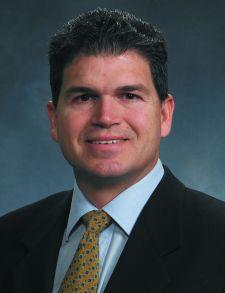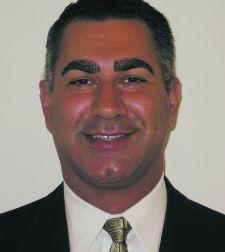
In the worlds of business, entertainment and politics (including, branding, marketing, newsworthiness and public relations) image is everything.
Not surprisingly, in the world of healthcare, the same could be said, particularly involving picture archiving and communication systems (PACS). For an industry that struggles to improve costly and inefficient operations, reduce medical errors, invest in the latest and most optimal technology, deliver quality service and succeed despite ongoing reimbursement cutbacks, accuracy, clinical thoroughness and fluid operational workflow represent the three tent poles of provider performance.
Underlying those themes are the images of the patient. They have to be clear, easy to read and interpret and accessible anywhere quickly. In today’s untethered, wireless environment of expected instantaneous results and solutions PACS manufacturers must be prepared to make that giant leap forward to keep one step ahead of market demands.
Roughly two decades ago, PACS took the market by storm, fusing computing to imaging that redefined clinical improvement. To thrive in the coming decades, PACS technology has to incorporate a variety of clinical, financial and operational applications that expands its original premise beyond predicted boundaries.
As a result, in this first installment of a multipart series, Outpatient Care Technology revisited with nearly two dozen key executives at the leading PACS manufacturers for their insights on product development, key market and technology trends and customer demand.
Do you foresee a one-size-fits-all approach to future PACS, in which a single system can be applied to radiology, cardiology, oncology and surgery or do you foresee more of a modular approach in which specialty-specific applications can be seamlessly integrated into a single system, enabling facilities to buy and bolt on as they grow? Why? What are the pros and cons of either type?
Troy Oliphant, PACS strategic analyst, Cerner Corp., Kansas City, MO
In search of the perfect system can be elusive and frustrating. I’ve never seen a one-size-fits-all approach that really works. After all, even the best Swiss army gadget can eventually get so busy that it becomes unusable. So that becomes the real question – ‘usability.’ How many applications reside on the system natively? Of those how many directly apply to the department’s workflow, what is missing and what is the licensing approach? For the systems that are missing is there an integrated ‘bolt on’ approach? In the past the complexity of workflow and imaging needs kept such disparate systems like oncology, radiology and cardiology from being on one workstation. This is slowly changing as the lines between departments continue to blur and the need to have a single user interface such as the Cerner ProVision Workstation becomes a necessity across the enterprise. Already the expectation is that these images are all stored in one repository and viewed through a distribution viewer, such as Cerner’s MultiMedia Foundation and ProVision Web viewer. Pros are a single GUI.
Ed Heere, president & CEO, CoActiv Medical Division, CoActiv LLC, Ridgefield, CT
A ‘one-product-fits-all’ is the ultimate desire of the hospital technological and financial decision makers – the ‘O’ level executives. They really want to acquire, archive, view and distribute all medical images with the same product from the same vendor. Standardization, especially across the medical image enterprise in multiple-facility healthcare organizations, has truly become the driving force moving forward. Fewer vendors, fewer divergent systems to integrate, less duplication of hardware, software and support cost!
Note that I said one-product-fits-all, and not one-size-fits-all. CoActiv is a single product that allows all the required functionality ‘acquire, archive, view and distribute all medical images’ for radiology, cardiology, mammography, oncology, orthopedics, surgery, etc., but is structured in a modular format that allows a facility to easily add additional modalities and specialties as the facilities’ particular needs change and the available technology changes. Scalable, affordable and flexible have become the new buzzwords as PACS becomes ‘commoditized.’
A single system that can easily, seamlessly, and affordably integrate divergent modules is the only system that can work as we move toward a national integrated healthcare environment. Imagine the problems, costs and delays of trying to integrate five or six different imaging systems within a single facility into a national healthcare standard. This single modular solution has all the ‘pros’ and none of the ‘cons.’
Milton Silva-Craig, J.D., MBA, president & CEO, Technology Solutions Co. and its wholly owned Exogen Solutions LLC, subsidiary, Chicago (Silva is former president and Chief Operating Officer, Emageon)
It really no longer is a question of foreseeing an enterprise system to medical image management. The transformation began in the 2003-2004 time frame and continues to gain momentum such that it is becoming the standard requirement. Nearly every request for proposal (RFP) we receive today calls for this requirement. Notwithstanding, there do remain, albeit minor, some application capabilities that may be more developed with a specific department based PACS. This phenomenon, however, is quickly subsiding as the ability to integrate specialty-need features can be easily accomplished through Web integration and patient-context sharing.
The question of modularity is really a separate one. Many PACS systems are designed to provide modular scalability. Whether you want to ‘configure’ a system for a department or outpatient setting, that is generally possible. These modular deployments then typically integrate into the broader enterprise solution.
Paul Shumway, vice president, NovaRad Corp., Salt Lake City
A one-size-fits-all approach is on the horizon for PACS. The biggest pro of the one-size-fits-all approach is that a facility will only have to learn and maintain one system and will be able to access software, support, service and training through a single vendor. While this one-size PACS approach that can be applied seamlessly to radiology, cardiology, oncology and surgery is plausible and a good approach, a ‘con’ or hurdle that will need to be overcome is this approach requires new technology and will take time and money to develop. These development costs can then in turn pose a potential barrier to access for end users because the technology won’t be affordable.
Lenny Reznik, director, image and information solutions, Agfa HealthCare Americas, Greenville, SC
PACS is undergoing a transformation from an exclusively departmental enclave to an enterprise-wide solution covering multiple departments. While specialized display solutions and workflow are required for mammography, cardiovascular, radiology, orthopaedic and other departments, a unified infrastructure is needed to create the clinical foundation for sharing information.
Multiple departmental PACS typically reside in traditional, direct-attached storage silos, randomly distributed across the enterprise. This model has worked reasonably well for less complex environments; however, it has predictable limitations as an enterprise strategy for managing critical clinical data as data is either not available to caregivers or even duplicated throughout the infrastructure. This has made it increasingly difficult for healthcare organizations to provide adequate protection of clinically critical data and has invariably led to fragmented patient care.
Healthcare organizations are increasingly taking on clinical data consolidation to help rationalize IT infrastructure investments, reduce IT cost, and to take advantage of newer innovative technologies and PACS is not unique. PACS is about getting data where it needs to be and managing it so that the data can be distributed across the enterprise via the multiple systems that make up the clinician’s point of care. Providing the clinician with relevant clinical data from across the patient’s continuum of care is paramount in the enhancement of diagnostic confidence and for the realization of true continuity of care.
Bill Culton, product manager, diagnostic solutions, ASPYRA Inc., Calabasas, CA
We foresee one central image data repository with multiple viewers (GUIs) for the different user specialties. The advantage to this approach is in the IT maintenance with storage, backup and connections to modalities, media printers (CD, film), and with outside systems (import and export). The downside is cost and making such a critical one source fail safe.
Hossein Pourmand, vice president, business development,
Candelis, Irvine, CA
While there is commonality in the underlying PACS requirements in radiology, cardiology, oncology and surgery, there are significant specialized requirements that make a one-size-fits-all approach quite limiting. Best-in-class specialty-specific applications are the result of intense focus on a particular area. As a result, it seems that no one company has been able to convince the market that they have a single system which excels across all disciplines. We are increasingly seeing a modular approach in which our customers have selected best-in-class specialty-specific applications for integration with our ImageGrid PACS Appliance. In order for this approach to be successful, the underlying PACS platform needs to provide excellent and seamless interoperability through complete adherence to DICOM standards, including DICOM-RT. Unfortunately, not all PACS solutions currently provide this flexibility and furthermore, many PACS solutions are not able to work seamlessly with other solutions due to proprietary DICOM tags.
Michael W. Jackman, president, Healthcare Information Solutions, Carestream Health Inc., Rochester, NY
We see the emergence of an overarching PACS architecture that provides shared storage, workflow management and Web distribution. This infrastructure would also provide the unique clinical tools and workflow management needed by each clinician. Healthcare providers cannot afford to continue installing departmental PACS systems. These disparate PACS platforms are expensive to maintain and make it difficult to share the clinical information needed to present a holistic view of the patient.
Eric Mahler, director of marketing, Radiology Informatics, Philips Healthcare, Andover, MA
Philips’ approach to manage ‘all’ imaging modalities is to provide the backend server and archive infrastructure. iSite PACS using iSyntax will enable efficient enterprise wide image distribution to all healthcare users. Additionally, iSite PACS will seamlessly integrate to application specific workstations, such as cardiology, to address advanced feature functionality. Using this approach reduces costs by minimizing databases, system interfacing expenditures and storage requirements, while at the same time, providing users with the best workstation functionality and performance.
Allen Scales, senior vice president, product management, Emageon, Birmingham, AL
The approach is an enterprise one – which is essentially modular in nature – but the best solution is to have one that intelligently takes both paths.
The industry is moving toward an enterprise-class solution for content management and visualization of image and image-related information. These enterprise class solutions will natively cover at least 80 percent of the workload for diagnostic and image-intensive specialists. They will also serve as a platform for orchestrating content management and workflow with specialty applications to cover niche and emerging advanced applications in areas such as visualization, CAD, reporting, data mining and workflow dashboards.
David Nikolai, business marketing manager, IMPAC Medical Systems Inc., Escondido, CA
Despite the tendency in information technology towards universal and enterprise-wide solutions, we believe that the reality of differing workflows dictates a specialty-specific PACS solution, particularly for oncology. Radiology and cardiology workflows tend to be rather linear in nature and quite different than the image-guided oncology workflow in which images, data and documents need to be reviewed at different times and at different stages throughout planning and treatment. The adaptive nature of image-guided radiation therapy (IGRT) requires a PACS that doesn’t rely on isolated or specialized software or workstations. In order to maintain an efficient workflow in this environment, IMPAC has fully and seamless integrated MOSAIQ Oncology PACS into our OIS, allowing easy and flexible access to data and images from within the context of the electronic patient record.
Bob Cooke, vice president, Network Business Management,
FUJIFILM Medical Systems USA, Inc., Stamford, CT
We need to look at PACS as at least two distinct systems. One system that can manage the clinical workflow requirements of a specific imaging department, and another system that can manage the infrastructure requirements to manage a large amount of digital information.
The clinical systems of radiology alone, which include cardiology and mammography as an example, generate more than 80 percent of the volume of information within a healthcare institution. So clearly, investment in a PACS in one of these domains should be viewed as the first step towards building a complete solution for the management of this data.
Any integrated ‘back end’ solution should have the following capabilities: Hardware independent, store data in its native form, cover multiple domains (radiology, cardiology, mammography), portability, security, provide economy of scale, provide high-speed access to the requestor and fit with corporate data retention requirements.
So whether it’s a single system or several systems, the solution should meet these requirements. If it doesn’t, there are potential compromises in terms of scalability and economy of scale — not to mention clinical workflow. A one-size-fits-all approach cannot be taken to the back end without consideration for the requirements of the front end.
From a clinical perspective, radiologists, cardiologists and mammographers need to have confidence that the system is enabling them to deliver the highest level of clinical outcomes. The departments themselves also need to improve workflow, which, for good reason, is very different among these specialties. Integration of radiology data to a cardiology system is extremely valuable, as it provides the integration of variety of data (for example, lab results) into the diagnostic process, giving the interpreting physician a more complete picture. The requirement for the interpreting physician is to effectively navigate the required – and increasing – amount of data in an ergonomic fashion. So a one-size-fits-all approach to the clinical equation clearly will not work.
The fact that an increasing amount of diagnostic work is being performed remotely should not be ignored and will also impact the evolution of PACS technology.
Richard Taylor, national sales director, ScImage, Los Altos, CA
ScImage’s historical approach has been to address the image management and information exchange needs of as many departments as possible with one solution. However, we have never insisted that a customer purchase all components at the same time. We employ a stepped approach to adoption of our technology. In this way, our customers can purchase and digest our solutions on their timeline. Of course, if a customer has a stated preference to maintain an existing system, ScImage provides robust tools for integration with third-party software. As more systems come on-line in the hospital environment, the need for a unified approach to information exchange becomes more important. This is the foundation of our approach and the reason why ScImage uses the word ‘Enterprise’ in our tagline.
Henri “Rik” Primo, director of marketing and strategic relationships, Image and Knowledge Management division, Siemens Healthcare, Malvern, PA
Imaging repositories for radiology, cardiology, oncology, surgery, etc., would ideally share the same database and IT infrastructure. In this way, all the patient data can be found in one location, can be accessed with one search engine and can be maintained without creating complex synchronization issues when pulling from multiple databases and different repositories. The applications that will be used to access these data and to perform operations with these data will, however, be specific to each specialty. For example, an orthopedic surgeon may want to use the imaging data in the PACS database to perform templating of endoprosthesis; a cardiologist may use the data to calculate cardiac volumes; a neurosurgeon may use these data for 3-D planning, and; a radiologist would use the data to render a diagnosis.
A modular approach is necessary since these different applications would all have different upgrade paths. It is hard to expect that one application, other than a simple image viewer, would suit the needs of all specialties. As such, a PACS needs to be built with a service-oriented architecture (SOA) mind set. The ideal solution would enable multiple different applications to be plugged into it. A good example of such an architecture is the Siemens approach with the syngo Suite where different syngo applications can plug into the same imaging database.
Tim Kulbago, senior vice president, strategic business initiatives, Merge Healthcare, Milwaukee
Either solution is viable, but I think in the outpatient
setting the goal of a single system will not be achieved. Outpatient centers operate in a much more competitive environment than their in-patient counterparts. This will drive the market to create highly optimized and specialized workflow and business flow scenarios. To put it another way, the benefits of having a business differentiator will outweigh the benefit of a single system that does everything mediocre.
Gary Reed, president, Integration Resources, Inc., Lebanon, NJ
Currently there isn’t a ‘one-size-fits-all’ solution for a multi-clinical department PACS. What is happening is different clinical departments (other than radiology) are requiring PACS type of online access and interaction to medical images. Clinical areas include cardiology, orthopedics, neurology, oncology, pathology, ob-gyn and other areas where having access to medical imaging data is needed.
However, it is not as simple as having access to the medical images. Each clinical area has its individual application requirements and user interfaces. A radiology user interface is very different from a cardiology or orthopedic user interface. Therefore, vendors are developing subspecialty specific applications. At present there isn’t a standard for each clinical application and vendors are offering their version/brand for specific applications.
Consequently hospitals and imaging centers are purchasing specific PACS applications from multiple vendors. Some are integrated into the radiology PACS, but most are standalone departmental solutions. To make things worse these standalone systems have their own image archives and databases preventing a seamlessly integrated multi-department solution.
In the future, probably five to ten years, vendors will be offering a single integrated PACS solution that addresses the needs of multiple clinical applications. Until then, multi-department PACS solutions will experience interoperation difficulties, disparate silos of image and patient data, data migration between systems, system upgrade issues and frustration by referring physicians attempting to access patient data cross departments.
The goal is to have a single log-on where you have access to multi-department medical image and patient data that is tied to the electronic health record to have real-time interaction to the electronic longitudal patient chart.
Rick Rubin, M. Eng., MBA, executive vice president, research and development, Intelerad Medical Systems Inc., Montreal, Quebec, Canada
We foresee a modular approach that encourages innovation and competitive pricing, that leverages prior investments already made, and that takes advantage of the efforts made by implementing industry standards and the IHE initiative.
Historically, our industry began with single vendor systems that were incredibly expensive, proprietary in nature (and therefore creating silos of information), and that maintained a stranglehold on the customer despite inadequate – and immature – functionality, high prices and poor service. We do not expect to see a return to this type of healthcare model, and although there are still quite a few issues to be resolved in regards to integration and system communications, the alternative, which is a return to the single-vendor model, would impact the rate of innovation and quite frankly be a step backwards for healthcare.
Shelly Fisher, president, BRIT Systems Inc., Dallas
The industry is moving toward a single system with different views and tools based upon the user identity. For example, someone who logs in as a radiologist will get a certain set of tools; same for cardiology, oncology and surgery. Behind the scenes, there can be modular components, available as needed. For example, an orthopedic surgeon is the only user of specific templating tools, so those need to be available to him/her. There are three big advantages of bolting it on: It exists today, one can select the best of breed today and we can tap into other company’s expertise. There is no need to reinvent that wheel or hire those experts. At BRIT, we’ve seamlessly brought in OrthoView’s application for this purpose. Not only do they have a wonderful product, but they have a wealth of experience working with the various implant vendors and with the surgeons.
Mike Dolan, vice president, sales, Acuo Technologies LLC, St. Paul, MN
Acuo Technologies has been passionate about the power of standards. We believe that a solution built on a standards based infrastructure has the greatest chance of long-term viability, lowest total cost of ownership and best capability of leveraging emerging technologies. The standards-based solutions allow IT professionals to gain control of their data, allowing nimble upgrades, replacements, or additions of clinical viewing solutions, formerly known as PACS. Having a vendor neutral infrastructure virtualizes DICOM and HL7 up the stack, but also enables the virtualization of storage down the stack.
A ‘single throat to choke’ is a strategy that we have seen, unfortunately, reverse over time. The partnerships and systems, rarely last forever and divorcing from an all-encompassing vendor is a painful, time consuming, and expensive undertaking that limits the ability to deploy the next solution. Acuo does not see these viable open solutions as modular; we see them as enabling. The one-size-fits-all vendors will keep all your business with a proprietary system, even if there are parts of their solution that are not very good. Rarely is one vendor the best at everything, but in the proprietary world, you have to take the whole system, instead of the best parts.
Stephen N. Kahane, M.D., chairman, CEO and president, AMICAS Inc., Boston
We will likely see both approaches to the market. There is something to be said for a ‘context-sensitive’ system that intelligently launches the viewer most appropriate for the nature of the study that is being viewed. This could include radiology, cardiology, oncology, etc. This approach is valuable in that there would be a common workflow that will predict what the user needs – instead of the user making the decision to go into a specific application based on their needs, which might be an error-prone process.
The challenge with this approach – and the reason that specialty-specific systems will continue to exist – is that the clinical functionality in a one-size-fits-all approach is inevitably compromised. Thus, clinicians would need to make the decision to have better workflow or better clinical functionality – but not both. We see this all the time in our industry. The best example today is in mammography. Most reasonable PACS systems support some level of mammography – but many customers still choose to buy a dedicated mammography workstation because of the incremental functionality available on that workstation.
The reality is that modalities advance at a very rapid pace – and IT systems like PACS are in a consistent pattern of ‘catch up’ to achieve the level of clinical functionality available from specialty systems.
Will industry standards motivate providers to buy multiple systems from different manufacturers without having to worry about interfacing/integration challenges or will providers seek out manufacturers that offer multi-departmental micro-systems that can be plugged into one another? Why? Pros and cons?
Adam Earwicker, business marketing manager, IMPAC Medical Systems Inc., Escondido, CA
Just as in other parts of the industry, the appeal of a single source for related systems will always generate a level of interest for a certain segment of the market. The one-stop shop has inherent appeal because of the promise for easy integration and coordinated support. At the same time we believe a larger segment of the market will pursue systems that meet their functional requirements. Connectivity standards continue to develop and we are already seeing a high level of interconnectivity between vendors. Further, top level standards, such as those driven by IHE, will continue to drive interoperability and provide customers with a sense of confidence. The public results of IHE connectathons push all vendors to work closer together in order to ensure a favorable outcome. In the end, we believe plug-and-play technologies will dominate the market and drive decisions towards functionality and price.
POURMAND: Industry standards are definitely enabling healthcare facilities to have the flexibility to buy from vendors which have a proven strength in a particular area. As the market for PACS, visualization technologies and RIS/HIS/EMR have matured, seamless integration and interface with other systems and solutions has emerged as a key criteria for customers when selecting vendors. This trend is allowing healthcare facilities to meet the unique needs of each department with solutions that physicians want and which meet their specific needs.
KULBAGO: I think that in the outpatient world the need to differentiate is vital. You can’t differentiate technically if everyone is using the same standard. So it’s a balancing act. In some cases the industry standards are a material benefit. However, our customers see opportunities to differentiate themselves beyond areas addressed by the standards community. They want to find a way to solve that problem regardless of standards-compliance.
CULTON: Industry standards enable the customer to choose the ‘best-of-breed’ depending on their needs not on manufacturers design concepts. Initiatives, such as IHE, ensure manufacturers adhere to the standards and allow the customers to be comfortable in their choices and interoperability.
JACKMAN: The healthcare industry has developed very successful standards: DICOM for imaging and HL7 for data. These standards enable providers to select and implement industry-leading healthcare IT solutions from multiple vendors. We believe multi-vendor environments nurture the competition that leads to superior performance and represent the future of this industry. Single-source solutions are too limiting because no one vendor can offer the best technology and applications in every category. Within this multi-vendor environment, however, we do need to establish a common storage and workflow management infrastructure to enhance the sharing of information and reduce costs.
OLIPHANT: The long term approach to an integrated RIS/PACS solution is how the EMR interacts with radiology and how radiology interacts with the hospital information system. Taking a best-of-breed approach does not lend itself to a seamless workflow, but more of a department-by-department view of what works best rather than looking across the continuum of care. This ‘island of information’ approach means utilizing multiple stores of information with multiple application programming interfaces (APIs).
While a best-of-breed approach is not without its downfalls, it can sometimes be the only option when the vendor does not have multiple solutions. The integrated approach lends itself to a smoother experience and a more structured flow of information while providing a universal platform from which the client can store and view the entire patient history. What most vendors do here is limited by not being able to see past the radiology department. Using a person-centric architecture, Cerner brings the entire patient history to the radiologist, a true end-to-end solution. For both of these directions, it also helps to know what the future strategies are of the vendor and if it lends itself to the direction the client is heading.
HEERE: IHE and other evolving healthcare standards such as DICOM, HL-7, HIPAA and FDA regulations will ultimately make the integration of departmental sub-systems easier. But why deal with the expense and duplication of systems if one modular system can accomplish all needs? Realize that the training of many continuously changing and expanding staff personnel on multiple systems can be a truly daunting and expensive experience. A single system with a common ‘graphic user interface’ can make training and support a blessing rather than a curse.
SILVA-CRAIG: It is our belief that the progression of industry standard will further support an environment of ‘best of breed.’ Further, since investments have already been made, no care provider wants to throw away that asset for the purpose of standardizing on one company’s application. You see evidence of this reality when purchasers buy an enterprise medical image storage solution from one vendor and visualization technologies from another.
The pros are that you can leverage the best technologies in the market and ‘plug-n-play’ those into your enterprise solution. The cons are that as the standard evolves there may be points of integration that have not yet been established, thus impacting workflow. Again, this is simply a point in time. The tailwinds to provide data transparency and access, outside of imaging, will continue to bear across all of healthcare.
SHUMWAY: While IHE, HL7 and other industry standards are helpful, they are not a panacea. Integration between multiple systems from different manufacturers is still a really big challenge. To mitigate integration issues, the best-case scenario right now is for a facility to choose vendors that keep the end user in mind and develop their technologies with flexible interfaces.
MAHLER: A single back-end imaging PACS infrastructure is the best solution to minimize interfacing/integration challenges that plague the industry today. Reducing multiple HL7 interfaces to a single solution will condense implementation and support requirements.
REZNIK: By strictly adhering to DICOM and Integrating the Healthcare Enterprise (IHE), a vendor-neutral PACS archive is possible. These types of solutions enable clinical departments such as radiology, cardiology, dermatology, orthopedics, women’s care and others to select the workflow solution that works best for them while simultaneously sharing storage infrastructure and creating a single point of integration for image-enabling the EMR.
However, even with the advent of these standards and initiatives, some interoperability scenarios have not yet been addressed. DICOM still remains a point-to-point communication protocol, and therefore some workflow issues such as updating studies after changes are made (mark-ups, annotations, split/merge studies, etc.) aren’t defined in multi-vendor environments.
Agfa HealthCare has been able to predict these challenges and address them with our IMPAX Data Center multimedia DICOM archive. But not every vendor has adapted these standards and limitations in workflow with multi-vendor solutions continue to exist. Agfa HealthCare’s goal is to provide the most connectable solution in the industry using IHE standards.
SCALES: Successful solutions will need to provide native support across the enterprise as well as provide facile integration to other information systems and specialty visualization and analysis systems. The native support is necessary to meet the business need of efficiently providing a unified view of the visual patient record and associated information. Easy integration is necessary to allow freedom of choice to integrate other tools, whether they represent other information sources, legacy visualization tools or emerging technologies.
COOKE: Industry standards have always been important. Whether they are domain-specific standards, such as DICOM and HL-7, or industry standards like HTTP or NTFS. Providers need to consider both when evaluating these systems.
Depending on the goals of the provider, the integration of multiple systems can be as simple as securing systems that can utilize a common (e.g., industry standard) infrastructure (including storage infrastructure), and still gain economy of scale. Integration challenges range from integration at the desktop level to the ability to bring clinical information together to integration with the variety of external systems (such as PACS with dictation systems, or integration of radiology, cardiology and mammography data) that are required to effectively implement a digital department.
The benefit of implementing a single infrastructure solution is that it has the potential to drive economy of scale as well as to simplify the management of the infrastructure. These benefits must be tempered against the potential compromise in clinical functionality that a single system at the diagnostic desktop might have. The clinical needs of each department are very different in terms of workflow and diagnostic tools.
TAYLOR: HL7, DICOM and ultimately, IHE integration profiles are designed to make interoperability more attainable, but unfortunately, in our experience, not less expensive. At the community hospital level, siloed solutions are becoming less prevalent as hospital and healthcare providers become more educated buyers and focus on enterprise ROI. However, at larger institutions, political barriers between departments still tends to fuel for siloed solutions. Most now understand the importance of a more unified approach to medical image and information exchange and are actively pursuing products that can meet the needs of multiple departments or technology that can help link multiple, disparate solutions into a unified electronic medical record for all caregivers.
PRIMO: Industry standards like DICOM and HL7 can facilitate the interfacing of multiple systems form different manufacturers. However, true interoperability remains a challenge. The Integrating the Healthcare Enterprise (IHE) initiative provides integration profiles to make these standards functional. However, there can be accountability issues between healthcare providers and equipment manufacturers if the integration doesn’t work as expected. Manufacturers that offer multi-departmental microsystems that can be plugged into a common infrastructure can eliminate many of these accountability issues.
REED: At present, health systems must purchase specific clinical applications from multiple vendors if they want a best-of-breed solution. PACS vendors are offering integrated solutions with applications for multiple departments. However, the specific applications may not be the best available for individual departments.
If a health system seeks a multi-department solution and it falls under the radiology budget, the decision will tend to be to select a solution from a single vendor. If each department is making the purchase decision from their own budgets they will select the best solution for their own needs regardless of the system-wide integration issues and the department controlled data silo problems. Again, it will be five to 10 years before PACS vendors are offering a complete multi-department single login and single database solution.
RUBIN: We believe that industry standards and the IHE
initiative have come a long way and will continue to evolve. It should motivate providers to buy the right systems for their needs, and providers are, or should be, aware that systems integrations occur everywhere and are virtually impossible to eliminate. Products that are marketed as coming ‘from a single vendor’ are almost always an amalgamation of products as a result of mergers and acquisitions. And the number of vendors capable of marketing a complete enterprise-wide solution would be limited, and would negatively impact a provider’s selection.
Ideally, the purchase decision should be based on getting the right product for your needs, and that product may be different for each specialty or department. The downside is that yes, you will need to shop for, select and manage more products and deal with different service organizations, but the alternative is to have such a limited selection on the market that innovation and choice would be negatively impacted, and that providers would be subjected to the whims of a single vendor for price and service. A free market place with standards in place to ensure interoperability is the only logical way for healthcare to evolve.
FISHER: The biggest challenge to integration is ease of use for the end user. If it is transparent to the end user that there are multiple applications and they get the best tools and experts in each area, then it’s a big win. There are two levels of integration – one is the data integration – using data in one application that originates from a different application; and then there is the application or desktop integration where one just wants to move from application to application easily. For data integration, since BRIT provides both a PACS and a RIS, there is an existing database structure already available to store data from other vendors’ RIS and tools to utilize that data. So there is an advantage going with a PACS/RIS company even if you don’t use their RIS. For the desktop integration, a single sign-on with the ability to transfer the patient context between applications is key to efficiency. BRIT provides this with our viewing applications integrated to an EMR via either CCOW or a URL.
DOLAN: Acuo Technologies believes that the marketplace, the customer, will motivate vendor’s compliance with standards. Without market pull, there is no incentive for manufacturers to operate in a vulnerable, open manner which would enable their customers to buy a portion of the solution from other companies. Acuo does not see the standards-based systems as micro systems; rather, we see the marketplace looking for vendors who innovate on a specific technology in an open manner, enabling their offering to interoperate with a higher level of functionality. Networks were once proprietary but now they are standardized so that more applications can leverage the benefits the network provides. This is the same way that the archive is being extracted from each PACS vendor so that all applications can benefit from a consolidated open access storage solution now available to all imaging. The progression of breaking apart the levels of the solution delivery has been advancing since the beginning of healthcare IT. Standards are enabling customers to demand better solutions from the manufacturers that ‘play nice’ with others. The fate of standards is in the hands, or wallets, of the customer.
KAHANE: I suspect you will continue to see both buying patterns for the foreseeable future. The decision to choose an ‘enterprise’ solution versus a ‘best-of-breed’ solution rarely has to do with the quality of interfaces and standards. Typically, it has more to do with the philosophy an organization has regarding their IT initiatives. For example, customers who want a single vendor for all IT initiatives do so because they value having a single accountable party over superior feature/functionality at the department level. Similarly, customers who choose multiple vendors to support their IT initiatives typically favor the quality of individual products over a single accountable party. This latter group often recognizes that there may be an increased burden on them from an IT point of view, but they choose that path because of the superior departmental functionality.
We don’t see any ‘silver bullet’ in terms of interfaces and standards on the horizon that would have a dramatic impact on this purchasing behavior. Smaller organizations – such as most radiology groups and imaging centers – generally do not have the bandwidth to manage different vendors and different software products. Simply put, businesses of this size are generally best served by a single vendor.
For more information: www.acuo.com, www.agfa.com www.aspyra.com, www.brit.com, www.candelis.com, www.carestreamhealth.com, www.cerner.com, www.coactiv.com, www.emageon.com, www.exogeninc.com, www.fujimed.com www.impac.com, www.intelerad.com, www.irpacs.com, www.mergehealthcare.com, www.novarad.net, www.medical.philips.com/us, www.scimage.com, www.siemenshealthcare.com, www.techsol.com,
www.amicas.com








 November 29, 2025
November 29, 2025 









